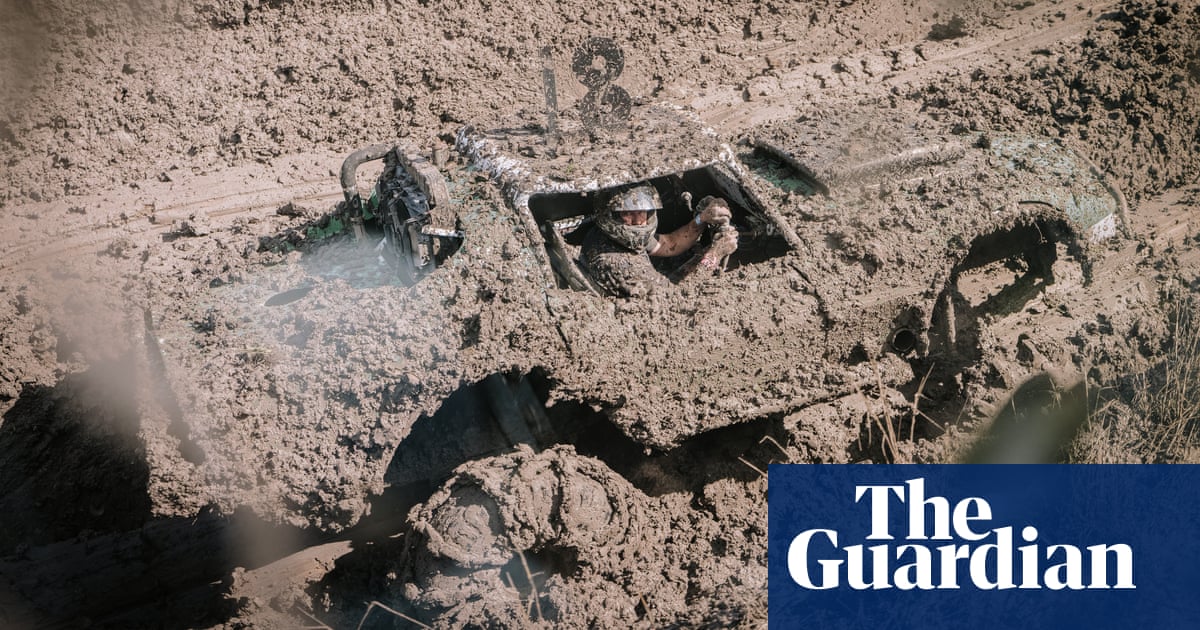World
Mud in their blood: the wild world of mud bombing

On Sunday afternoon in the usually quiet New South Wales village of Pallamallawa, the air vibrates with the roar of V8 engines as colourful cars speed toward deep, muddy trenches at 80km/h. In an instant, mud explodes skyward, covering everything in sight. Welcome to the wild sport of mud bombing – just don’t call it a race.
“It’s not a race; it’s called a mud trial,” says Errol Carter, a legend in the sport. Mud trials showcase heavily modified two-wheel drive cars built to withstand violent impacts as drivers navigate a series of muddy obstacles.
-
Former panel beater and now disability support worker Errol Carter at his Moree property. ‘Until you have done it you can’t really understand it, it’s a real adrenaline rush,’ he says. Carter is a mud-bombing legend, having won numerous state titles.
On his expansive property near Moree, about eight hours’ drive north-west of Sydney, Carter breaks down the rules: “You’ve got to make it through them mud holes,” he says. It’s simple – until it’s not.
Teams earn points for navigating trenches carved into the straights of a short track. If a car bogs, points are deducted. When stuck, a co-driver jumps out to hook a chain to a waiting tractor for a quick rescue – unless the car ends up on its roof, which means a longer wait. “It’s a real adrenaline rush,” Carter says. “Until you’ve done it, you can’t really explain it.”
This clash of machine v mud has been a staple of Australian outback culture since the 1940s. What began as a casual pastime at country fairs has evolved into a standalone, high-octane spectacle.
The costs of building and maintaining a “bomb” are high, and the winnings low; it’s the glory of being named state or national mud bomber of the year that matters.
To earn points toward this ultimate crown, enthusiasts from remote towns such as Walgett, Sarina and Collarenebri compete five to six times a year at events governed by strict Speedway Australia regulations. There’s a method to the madness, even if it looks totally chaotic to newcomers.
Once a year, amid sprawling wheat, cotton and canola farms, Pallamallawa becomes the heart of the mud-bombing world. This time, the village is hosting the hotly contested NSW Mud Bomb of the Year title.
Recent heavy rainfall has created perfect muddy conditions, although it has made track preparation a challenge for local volunteers. The night before the event, the pit area is drained, trenches are filled, and final checks are made. Amid the last-minute hustle, yarns are shared, beers are enjoyed and work stretches late into the night.
At dawn, the roar of cars named Bruce, Little Devil, Madman and Dato shatters the morning calm. Four classes of vehicles compete, with the modified V8s leading the charge. Featuring massive chained tires and Mad Max-style makeovers, these beasts of the mud are crowd favourites.
The impact as the V8s charge into the mud holes sends huge clumps of muck flying, earning the sport its nickname.
Many competitors hail from long lines of mud-bombers – some now third generation – all bound together by their shared love of the mud. Both cars and knowhow are passed down, with many older drivers riding shotgun during the trials to offer advice on the best way through the muddy pits.
Helping keep the tradition alive has been the recent introduction of a junior category. Kids as young as 10 now take to the track in modified 2.0-litre passenger cars, with extra safety measures in place to keep everyone safe.
Among the young competitors is 10-year-old Grace, supported by her parents, Jordan and Pete, a seasoned mud-bomber. “I feel free,” she beams when describing her high-speed approach to a mud hole. “It’s like I run the whole world.”
A modest $10 entry fee for spectators helps attract families from far and wide, with a healthy crowd gathered trackside for a full day’s worth of action.
As the day progresses, the mud holes deepen, and navigating through them becomes a rare feat. Meanwhile, in the pit area, a different kind of chaos reigns: cars and crews are hosed down, and running repairs are made. Steam billows from the many “bombs” that have been pushed past their limits, causing an early end to the day for some.
Prizes have always been modest – what used to be a meat tray or just a trophy has now become a $1,000 reward for the overall winner, an amount barely covering travel costs for many. Yet the sport thrives, driven by pure passion for this unique pursuit.
“It’s the competition and the friendships that keep it going,” says 60-year veteran Jack Earl. “I just love playing in the mud.”
For a few weekends each year, mud-bombers experience this unique blend of freedom and excitement, carrying on the spirit of generations past. As Carter explains, “It’s not blood in our veins; it’s mud.”








